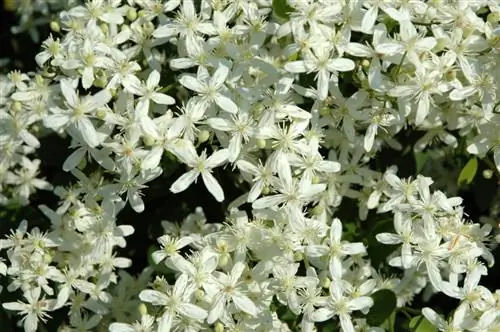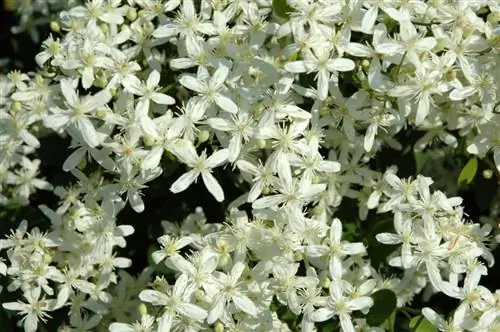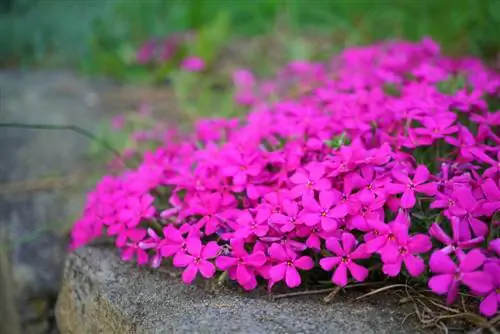- Author admin [email protected].
- Public 2023-12-16 16:46.
- Last modified 2025-06-01 06:02.
The clematis is not only considered a brilliant climber. The clematis presents its wonderful flowers no less luxuriantly as a decorative ground cover. Read here which species are particularly suitable and how they can be planted professionally.

Which clematis are suitable as ground cover?
Recommended ground cover clematis are the carpet clematis 'Praecox', 'Stanislaus', the Clematis integrifolia 'Arabella' and many varieties of the Italian clematis (Clematis viticella). They are characterized by their robustness, location tolerance and magnificent flowers.
The most beautiful ground cover clematis - recommended species
If gardeners assign a clematis task as a ground cover, it should be both robust and site-tolerant. If the area to be greened is partly in the sun and partly in the shade, a harmonious appearance should still be created. The following Clematis species and varieties are ideal for this purpose:
- Carpet clematis 'Praecox' (Clematis x jouiniana 'Praecox') with light blue flowers in late summer
- Carpet clematis 'Stanislaus' (Clematis x jouiniana 'Stanislaus') with shorter tendrils and larger flowers than Praecox
- Ground cover clematis 'Arabella' (Clematis integrifolia 'Arabella'), bright blue flowers from May to September
All varieties of Italian clematis (Clematis viticella) with magnificent flowers in many shades of blue and dark red are also excellent as ground cover.
Planting Clematis correctly as a ground cover - here’s how it works
The best time to plant clematis that you have propagated yourself or purchased ready-made is from August to October. In the sun-warmed soil, the roots establish themselves firmly in the ground by winter and start the new season with a vital growth lead. This is how you plant the clematis as a ground cover professionally:
- Dig a planting pit in a nutrient-rich, humus-rich location with 1.5 times the volume of the root ball
- Spread a drainage system made of gravel, grit or pottery shards at the sole
- Carefully unpot the clematis previously soaked with water and insert it in the middle
- Plant about 7-10 centimeters deeper than before
- The planting distance is 80 to 85 centimeters
After you have consolidated the excavation with your hands, water the freshly planted clematis. It is an advantage if a layer of bark mulch (€14.00 on Amazon), leaf mold or pine bark follows to shade the root area. If planting takes place in autumn, fertilizer is not added until the following spring. If you plant the clematis in May, enrich the excavation with compost and horn shavings.
Tips & Tricks
The unwoody shoots of a ground cover clematis can be effectively protected against approaching snails with the help of a traveling barrier made of sharp-edged chippings. Spread out as a layer of mulch, gravel also keeps the soil moist and warm for longer.






